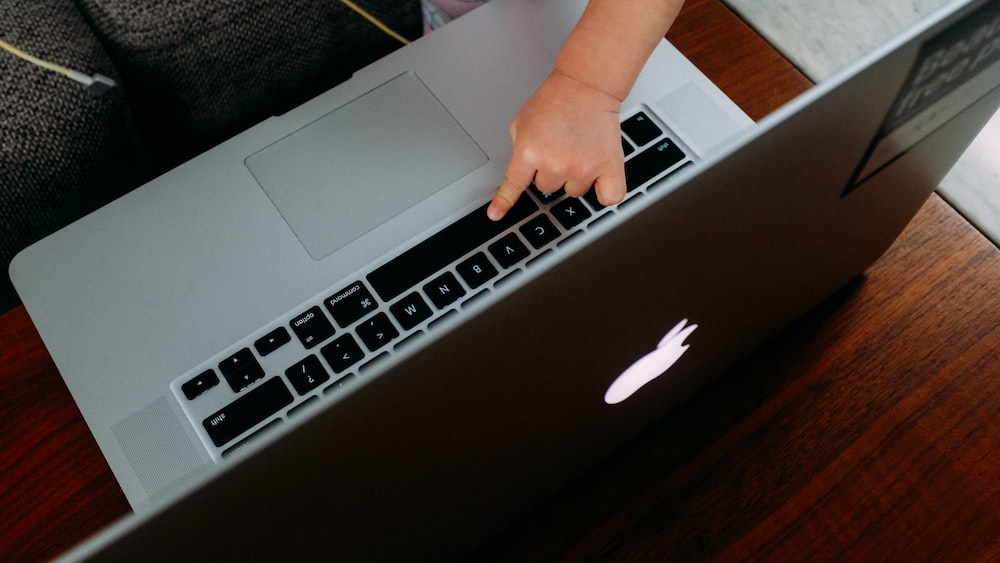21 Powerful Digital Habits To Boost Your Productivity Online
In today’s technology-driven world, our digital habits play a crucial role in shaping our overall well-being and success. As we increasingly rely on screens for work, entertainment, and social interaction, it’s essential to establish a healthy balance between our online and offline lives.
In this blog post, we’ll explore the concept of digital habits – both positive and negative – and provide 21 examples to help you cultivate a more mindful approach to your tech consumption.
By implementing these strategies in your daily routine, you can improve your mental health, foster healthier relationships, increase productivity levels while also reducing digital overload.
Key Takeaways
- Digital habits refer to the behaviors and routines we develop when using digital technology, which can have positive or negative effects on our overall well-being.
- Positive digital habits include setting boundaries and limits on screen time, practicing mindfulness, prioritizing sleep and rest, developing self-control, creating a productive digital workspace, being aware of cybersecurity measures, and engaging in meaningful online communities.
- Negative digital habits to avoid include mindless scrolling and excessive screen time, cyberbullying or spreading hate online, impulsively buying items online without considering their value or necessity, falling prey to clickbait headlines and fake news. It’s important to be aware of these negative behaviors to cultivate healthier behavior patterns for a happier and more productive life both online and offline.
Understanding Digital Habits
Digital habits refer to the behaviors and routines we develop when using digital technology, including our use of social media, smartphones, and other devices. These habits can be positive or negative, depending on how they affect our mental health, relationships, productivity, and overall well-being.
Defining Digital Habits
Digital habits are the patterns and behaviors we exhibit when interacting with digital devices and online platforms. They encompass a wide range of activities such as browsing, social media usage, email management, gaming, and content consumption.
As technology becomes more deeply ingrained in our daily lives, it’s important to take a moment to reflect on our digital habits and strive for balance between beneficial uses that foster self-growth and potentially detrimental consequences of overuse or unhealthy practices.
For example, developing good digital hygiene through regular password updates or setting app limits can enhance both security measures while preventing excessive screen time.
In essence, cultivating healthy digital habits involves marrying intentionality with practical strategies that optimize your tech interactions rather than allowing them to control various aspects of life.

By taking steps toward responsible online behavior and mindful technology use – including protecting your privacy – you’re able to harness all the opportunities afforded by modern advancements while mitigating potential pitfalls along the way.
Digital habits are the patterns and behaviors we exhibit when interacting with digital devices and online platforms.
Examples Of Positive Digital Habits
Nowadays, it is important to develop positive digital habits to improve your digital life. Here are some examples of positive digital habits you can adopt:
- Turn off notifications for social media apps during work hours
- Use a password manager to ensure online security
- Take breaks from screen time and engage in other activities such as reading or exercising
- Set screen time limits using features on your devices or apps
- Use technology to keep track of your mental health and wellbeing
- Be mindful of the content you consume online and take breaks from negative or triggering content
- Practice empathy and respect when interacting with others online
- Prioritize quality sleep by avoiding screens before bedtime
- Have regular offline social interactions with friends and family
- Go through a digital declutter regularly to organize files and delete unnecessary apps or emails
- Use productivity tools such as calendars and task managers to manage your time effectively
- Don’t multitask while using technology, focus on one task at a time
- Be wary of scams, phishing attempts, and fake news by fact–checking information before sharing them
- Create meaningful connections with others through online communities that align with your interests and values
- Give back to the digital community by volunteering or contributing to causes you care about
- Incorporate mindfulness practices into your daily routine such as meditation or deep breathing exercises
- Keep up to date with cybersecurity measures by using anti–virus software and following safe browsing practices
- Protect your privacy by using secure passwords, two–factor authentication, and avoiding oversharing personal information online
- Unsubscribe from newsletters or promotional emails you no longer find useful
- Embrace lifelong learning through online courses, podcasts, or tutorials that can help you grow personally or professionally
- Finally, take responsibility for your own tech use by being aware of how much time you spend using digital devices and being intentional with how you use it.
By cultivating these positive digital habits, you can improve your relationship with technology and make the most out of your digital life.
Negative Digital Habits To Avoid
As we strive for better digital habits, it’s important to be aware of the negative behaviors that can hold us back. Here are some examples of negative digital habits to avoid:
- Mindless scrolling and excessive screen time
- Constantly checking social media notifications
- Engaging in cyberbullying or spreading hate online
- Impulsively buying items online without considering their value or necessity
- Falling prey to clickbait headlines and fake news
- Spending too much time on gaming or gambling apps
- Posting inappropriate content without considering consequences
- Becoming overly reliant on technology for communication and social interaction
- Stalking or harassing others online
- Sharing personal information with strangers or untrusted sources
- Ignoring cybersecurity and internet safety practices
- Allowing technology use to interfere with real–world relationships and responsibilities
- Multitasking excessively while using technology, leading to decreased productivity
- Procrastinating by spending too much time on digital distractions
- Comparing oneself negatively to others on social media platforms
- Impulsively forwarding chain messages without verifying their authenticity
- Engaging in addictive behavior such as constantly checking emails or messages
- Fostering a sense of entitlement through online interactions
- Disrespecting others’ privacy rights
- Belittling others online behind the mask of anonymity
- Copyright infringement through stealing digital content
Remember: Awareness is key when it comes to negative digital habits, so be mindful of your actions and take steps to cultivate healthier behavior patterns for a happier and more productive life both online and offline!
Cultivating Positive Digital Habits
To cultivate positive digital habits, you can start by setting boundaries and limits on your screen time.
Setting Boundaries And Limits
When it comes to cultivating positive digital habits, setting boundaries and limits is crucial. This means being intentional about how much time we spend on our devices and which activities we choose to engage in.
Setting boundaries can be as simple as scheduling specific times during the day when you allow yourself to check social media or limiting the number of notifications you receive.
One helpful strategy for setting boundaries is creating a designated workspace where you work on your computer or use other electronics. This can help establish clear lines between personal and professional time, reducing stress levels and promoting productivity.
Another approach is implementing “digital detox” days where you unplug from all devices altogether, allowing yourself to focus on self-care activities like reading, spending time in nature, or practicing mindfulness.
Practicing Mindfulness
One of the most important habits you can cultivate for a healthier digital life is practicing mindfulness. This means being fully present and aware of your thoughts, emotions, and surroundings when using technology.
Some simple ways to practice mindfulness include taking deep breaths before checking your phone or computer, setting aside a specific time each day for digital use, and turning off all notifications during certain hours.
Prioritizing Sleep And Rest
One of the most important digital habits that we can cultivate is prioritizing sleep and rest. With our screen time increasing, it’s easy to lose track of time and neglect healthy sleeping patterns.
However, getting enough sleep is crucial for our overall health and well-being.
To prioritize sleep, you can set a bedtime routine that includes winding down without screens an hour before bed. Put away your phone or tablet and read a book instead.
You can also use apps that help you track your sleep duration and quality so that you have a better understanding of your sleeping patterns.
Developing Self-Control
Developing self-control is an important step in creating healthy digital habits. It means being able to resist the urge to constantly check social media or watch another YouTube video and instead focusing on more productive tasks.
One effective way to develop self-control is by setting specific goals for yourself, such as limiting your time on social media each day or only checking your email at certain times.
Another strategy is practicing mindfulness, which involves being fully present and aware of your thoughts and actions. Mindfulness can help you recognize when you’re getting distracted by digital media and refocus on the task at hand.

Developing self-control is an important step in creating healthy digital habits.
Creating A Productive Digital Workspace
When it comes to maintaining balanced digital habits, creating a productive workspace is key. Start by organizing your digital files and desktop, minimizing distractions, and optimizing your computer’s speed.
Use tools like Trello or Asana to manage projects and deadlines, and keep your inbox under control with filters and labels.
It’s also important to pay attention to what you surround yourself with in your digital space. Follow inspiring influencers or thought leaders who uplift and motivate you instead of negativity or toxic content that drains energy.
Managing Emails And Notifications
One important aspect of developing positive digital habits is managing our emails and notifications. In today’s fast-paced world, it can be easy to become overwhelmed by the constant influx of messages and alerts that come through our devices.
Start by determining which notifications are truly necessary for you to receive in real-time. For example, you may want to keep notifications on for important work emails but turn them off for social media or news apps.
Consider setting specific times during the day when you check your inbox instead of constantly being interrupted throughout the day.
Practicing Digital Self-Care
Digital self-care is essential in maintaining a healthy and balanced life. Just like how we take care of ourselves physically, it’s equally important to prioritize our well-being online.
One way to practice digital self-care is by setting boundaries for yourself.
Another aspect of digital self-care is being mindful of what you consume online. It’s important to be aware of how certain content may affect your mental health and to make choices that prioritize your well-being.
Remember, just like with any other habits, cultivating positive digital behaviors takes time and effort but the benefits are worth it for both our physical and mental health.
Supporting Online Communities And Causes
When we engage with online communities, and support causes through digital platforms, we can contribute to positive change and make a difference in the world. One way to do this is by joining groups or forums where people come together around shared interests or goals.
Another way to support causes online is by donating or fundraising for organizations that align with our values. Many nonprofit organizations have websites or social media pages where they share information about their mission, programs, events, and impact.
By contributing financially or volunteering our time and skills, we can help them achieve their goals and address critical social issues such as poverty, climate change, human rights violations, health disparities, and education inequality, among others.
Contributing To Digital Sustainability
One important positive digital habit to cultivate is contributing to digital sustainability. This means taking responsibility for our individual impact on the environment through our use of technology and striving towards more sustainable practices.
Another way to support digital sustainability is by being mindful of online purchases and choosing products that are ethically made with sustainable materials.
Additionally, we can support companies and organizations that prioritize environmental issues in their business practices.
Overcoming Digital Addiction And Overuse
If you find yourself constantly checking your phone or mindlessly scrolling through social media, it’s possible that you’re struggling with digital addiction and overuse.
The good news is that there are several strategies you can use to overcome these habits and develop a healthier relationship with technology.
One effective method is to set boundaries and limits around your technology use. This may mean scheduling designated times for checking email or social media, turning off notifications during certain hours of the day, or simply leaving your phone in another room during meal times or before bed.
It can also be helpful to practice mindfulness when using technology, focusing on the present moment rather than getting lost in endless browsing sessions.
The Importance Of Modeling Positive Digital Habits
Modeling positive digital habits is crucial for creating a healthier and happier online environment, especially for children and teenagers. As teachers, parents, or role models, we have the power to shape our students’ or loved ones’ relationships with technology by setting an example of responsible and balanced device usage.
For Teachers
As a teacher, you have a unique opportunity to model positive digital habits for your students. By setting boundaries and practicing mindfulness when it comes to your own technology usage, you can show your students how to prioritize self-care and balance in their lives as well.
In addition, it’s important to talk with students about responsible online behavior and digital citizenship. Encourage them to think critically about the information they consume online and teach them how to navigate social media safely and respectfully.
For Parents And Caregivers
As parents and caregivers, it’s important to be aware of the digital habits we model for children. By demonstrating positive behavior online, we can teach our kids healthy technology use and responsible online citizenship.
Parents can also take an active role in shaping their child’s digital life by discussing internet safety and privacy concerns with them at a young age. This includes teaching them how to create strong passwords and avoid sharing too much personal information on social media or other platforms.

Additionally, supporting positive causes online as a family is a great way to demonstrate how technology can be used for good in the world.
For Role Models And Influencers
As role models and influencers, our digital behavior can have a significant impact on others. It’s important to model positive digital habits that prioritize self-care, mindfulness, and responsible online behavior.
One way we can model positive behavior is by practicing good cybersecurity and online privacy practices. We should also make sure to support online communities and causes in a respectful manner while avoiding engaging in negative or harmful behavior.
As role models and influencers, our digital behavior can have a significant impact on others.
The Benefits Of Healthy Digital Habits
Practicing healthy digital habits leads to improved mental health, healthier relationships, and increased productivity and success. By cultivating positive digital behaviors, you can enhance your overall well-being and improve your digital life.
Improved Mental Health
When you cultivate positive digital habits, you’re not just benefiting your physical health and productivity. You’re also improving your mental health.
For example, taking a break from social media when it’s getting overwhelming or meditating to reduce stress caused by constant notifications can help improve your overall well-being.
Healthier Relationships
When it comes to our digital habits, cultivating positive behavior can greatly improve our relationships. One example of a positive habit is being mindful of our tone and language online.
Another healthy digital habit for improving relationships is setting boundaries on social media use. Scrolling aimlessly through feeds or constantly checking notifications can be detrimental to our mental health and distract us from building strong connections with those around us.
Increased Productivity And Success
When you cultivate positive digital habits, one of the benefits that come with it is increased productivity and success in your personal and work life. By setting boundaries and limits on your screen time, practicing mindfulness, and creating a productive digital workspace, you can better manage distractions from digital media and focus on more important tasks.
For example, by prioritizing sleep and rest, your brain will be well-rested for optimal performance during the day. And when you develop self-control to resist the urge to check social media or emails constantly throughout the day, you can dedicate quality time and attention to specific projects which ultimately increases efficiency.
Conclusion
So there you have it, 21 positive and healthy digital habits to improve your life. By cultivating these habits, you can develop a more balanced relationship with technology and gain greater control over how you use it.
Remember that the key to building strong digital habits is consistency and self-awareness.
Taking care of oneself in the digital world is just as important as taking care of oneself offline. By prioritizing mental health, practicing mindfulness, developing self-control, and contributing to online communities positively, we can make the most out of our time spent on screens while still maintaining healthy boundaries.
I wish you the best! Fabian.
Share with your Friends:






